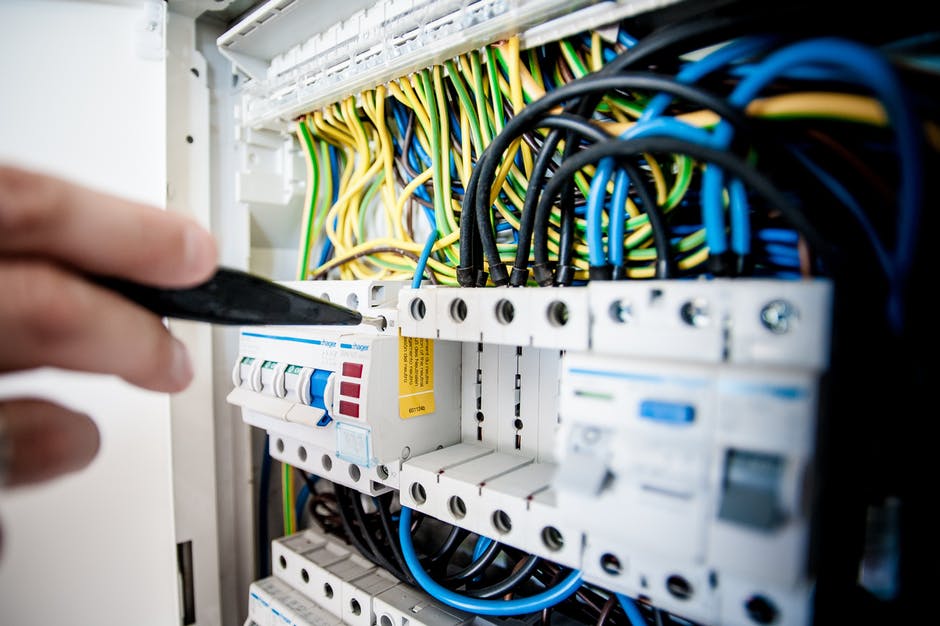Telecom Power Systems Transforming 5G Today

Telecom power systems help improve 5G technology and its performance. In 2023, over 1 billion people use 5G services. The need for better connections requires strong energy solutions. New telecom power systems use 20% less energy in networks. They are 90% more efficient per bit than 4G systems. These systems make 5G networks bigger and more flexible. They also support eco-friendly operations for better user experiences.
Key Takeaways
Telecom power systems make 5G faster and use 20% less energy.
They are 90% more efficient compared to older 4G systems.
Reliable power systems keep connections steady for streaming and emergencies.
Using solar and wind energy cuts down 5G's carbon footprint.
Smart tools and AI help save money and use less energy.
These systems power smart cities, traffic control, and IoT devices.
The Role of Telecom Power Systems in 5G Technology

Ensuring Reliable Network Uptime
Telecom power systems help keep 5G networks working smoothly. You need steady connections for streaming, calling, or using important services. Telecom cabinets shield equipment from weather and damage, keeping it safe. This protection lowers the chance of system breakdowns. It is especially important for mobile networks and emergency services. These systems make sure 5G gives faster speeds and less delay without stopping.
Reliable networks are not just helpful; they keep vital services running when needed.
Supporting Edge Computing and IoT Devices
Telecom power systems boost 5G networks to handle edge computing and IoT devices. They allow faster speeds and less delay, which smart cities and devices need. Edge computing processes data nearby instead of sending it far away. This improves how fast and well things work:
It gives quick answers, which businesses rely on.
It spreads traffic better, using resources wisely and easing main systems.
It cuts delay by handling data closer to users for fast replies.
It manages resources better, making data use more efficient.
In smart cities, edge computing helps control traffic lights and check road conditions. It also reduces traffic jams. For IoT, it makes instant choices, like security actions in connected devices. By mixing edge computing with telecom systems, you get better efficiency and lower costs.
Enhancing Network Resilience
Telecom power systems make 5G networks stronger and able to handle problems. You count on networks to work during emergencies, attacks, or power failures. With 5G, telecom systems use microgrids and controls to stay strong. Microgrids support key systems and keep communication going, even if parts fail.
These systems also help networks recover quickly after cyberattacks. This strength is crucial for healthcare, transport, and public safety. Using advanced tools, telecom power systems keep 5G networks steady and reliable, even in tough times.
Stronger networks mean you can trust 5G to work well, no matter what happens.
Key Benefits of Telecom Power Systems for 5G
Improving Energy Efficiency
Telecom power systems help 5G networks save energy and work better. They make sure energy is used smartly, cutting waste and meeting growing needs. Since 5G uses more power than older networks, saving energy is very important.
The telecom power systems market is growing fast because of this need. Experts predict it will reach USD 10.8 billion by 2033. This growth is due to more mobile networks and 5G use. In 2023, there were 1.76 billion 5G users worldwide, a 66% increase from last year. This shows why energy-saving systems are so important for more users.
Metric | Value |
|---|---|
Global telecom power systems market size | USD 10.8 Billion by 2033 |
Global 5G connections in 2023 | 1.76 billion |
Year-over-year growth in 5G connections | 66% |
North America 5G penetration | 29% |
North America year-over-year growth | 64% |
New 5G connections in North America | 77 million |
Using renewable energy like solar and wind makes these systems even better. They lower the environmental harm of 5G while keeping networks running smoothly.
Saving energy helps 5G grow and supports a greener planet.
Reducing Operational Costs
Telecom power systems cut costs by using energy wisely and reducing waste. Smart tools like AI and data analysis help predict energy needs. This helps telecom companies use energy better and spend less money.
Many industries already save money with telecom power systems:
Industry | Implementation Details | Benefits |
|---|---|---|
Cloud Computing | A logistics company added 5G to their cloud system. | Workers accessed data remotely, boosting teamwork and efficiency. |
Voice and Video | A hospital used 5G for better video calls with patients. | Doctors gave remote care, saving time and improving health services. |
Increased Capacity | A factory upgraded to 5G for faster network speeds. | They monitored production in real-time, improving operations. |
Higher Frequency | An online store used 5G for quicker mobile browsing. | Customers had a better shopping experience, increasing sales. |
Switching to hybrid systems, like solar and wind with grid power, also saves money. These systems cost less than diesel and get government support.
Lower costs mean 5G is affordable and easier to use.
Promoting Environmental Sustainability
Telecom power systems help the environment by cutting 5G’s carbon footprint. Research shows these systems improve energy use and reduce pollution. They make 5G networks more eco-friendly by using resources better.
Adding renewable energy, like solar and wind, reduces harm to nature. AI and big data also help by finding ways to save energy. For example, AI can study energy use and suggest ways to waste less.
As 5G grows, more small towers and stations are needed. Telecom power systems make sure these new parts use less energy and stay green.
By going green, telecom power systems support 5G and protect the planet.
Addressing Challenges in 5G and Advanced Networks
Managing High Energy Demands
5G networks need a lot of energy to work. This raises costs and uses more power. Balancing good performance with saving energy is hard. Networks must adjust power use based on traffic needs. These needs can change quickly, so fast adjustments are key.
It’s tricky to balance high speed and low energy use.
Sudden traffic increases need quick action to stay efficient.
New designs turn off unused parts to save energy.
Building large 5G networks also costs a lot. Using less energy is important to save money and help the environment.
Scaling for Future Network Growth
Growing 5G networks need strong power systems. These systems must handle more data and new technology. IoT and digital tools make scalable power solutions even more important.
Trend | What It Means |
|---|---|
5G Deployment | Power systems must handle more data and users. |
Data Center Growth | Reliable power is needed for cloud services. |
IoT and Edge Computing | Small, efficient systems are needed near users. |
Network Virtualization | Flexible power setups are key for software-based networks. |
These trends show why scalable power systems matter. They keep 5G networks ready for future needs.
Integrating Renewable Energy Sources
Using renewable energy in telecom systems helps 5G grow. Solar, wind, and other sources lower grid power use. This saves money and helps the planet.
Many companies now focus on being eco-friendly. Using renewables helps meet carbon goals and supports new tech. Studies say hybrid systems could save telecoms USD 14 billion yearly. This makes renewables a smart choice for powering 5G.
Renewable energy helps 5G grow while protecting the environment.
Real-World Uses of Telecom Power Systems in 5G
5G Networks in Cities
Telecom power systems help cities build better 5G networks. They make networks faster and more reliable for crowded areas. Upgraded systems lower delays, giving users a smoother experience. For example:
Infrastructure Type | Average Delay (ms) | Delay Variation (ms) |
|---|---|---|
Upgraded Systems | 25 | 4 |
Older Systems | 40 | 6 |
Mixed Systems | 32 | 5 |
These systems also find problems 20% faster using smart tools like ANOVA. This reduces issues and improves network speed. In 2023, DC power systems were used most, with 63% of the market. They are key to keeping city networks running well.
Strong power systems help 5G meet city needs.
Using Renewable Energy in Remote Places
In faraway areas, telecom systems use solar and wind energy for 5G. Hybrid systems mix renewables with advanced tools to power sites. This saves money and keeps networks working where grids are weak.
Some success stories include:
Case Study Title | What Happened |
|---|---|
Celltech Helps Finnish Telco Deploy Vertiv™ DC Power Systems | Saved energy and cut costs during 5G growth. |
Connecting Somalia to the World | Brought better connections to remote areas with renewables. |
Alternative Energy to Offer Connectivity in the Paraguayan Chaco | Used green energy to provide telecom services. |
These systems save money and protect nature, helping 5G grow in hard-to-reach places.
Smart Cities and 5G
Telecom power systems help smart cities use 5G technology. In Columbus, Ohio, 5G traffic systems cut travel delays by 40%. In Fukuoka, Japan, IoT sensors save water and reduce waste.
City | Use of 5G | Benefits |
|---|---|---|
Fukuoka, Japan | IoT water sensors | Saves water and cuts waste. |
Columbus, Ohio | 5G traffic system | Cuts travel delays by 40%. |
City of London | HD CCTV cameras | Improves safety and response. |
These examples show how telecom systems make cities smarter and life better.
Telecom systems power smart cities, improving urban life for everyone.
Telecom power systems are key to making 5G work well. They keep networks steady, efficient, and eco-friendly. As 5G grows, these systems will bring new ideas like robot controls and remote healthcare. They will also adjust to future needs, like AI-run networks and edge computing. The telecom power systems market is expected to rise from USD 4.2 billion in 2023 to USD 6.6 billion by 2028. This shows how important they are for better connections.
"Telecom power systems will shape the future of 5G and beyond.
FAQ
What are telecom power systems?
Telecom power systems give energy to telecom networks. They keep 5G towers and data centers running well. These systems include batteries, converters, and renewable energy sources.
Tip: Strong power systems keep 5G working without interruptions.
How do telecom power systems improve energy efficiency?
They use smart tools like AI and hybrid energy sources. These systems save energy by adjusting power to match demand. This cuts waste and lowers expenses.
Why is renewable energy important for 5G networks?
Renewable energy makes 5G less harmful to the environment. Solar, wind, and hybrid systems lower carbon emissions. They also help telecom companies save money and meet green goals.
Can telecom power systems handle future 5G growth?
Yes, scalable systems are built for future needs. They handle more data, IoT devices, and edge computing. These systems adjust to new tech, keeping networks reliable.
Note: Scalable systems help networks stay ready for the future.
What role do telecom power systems play in smart cities?
They power 5G networks that support smart city tools. These include traffic control, IoT sensors, and safety systems. Reliable power keeps these tools working well.
Emoji Insight: 🌆 Smart cities need strong power systems for better living.
See Also
The Importance of Upgrading Telecom Cabinets by 2025
Essential Features of Telecom Power Supply Systems Explained
Latest Innovations in Outdoor Telecom Cabinet Designs
CALL US DIRECTLY
86-13752765943
3A-8, SHUIWAN 1979 SQUARE (PHASE II), NO.111, TAIZI ROAD,SHUIWAN COMMUNITY, ZHAOSHANG STREET, NANSHAN DISTRICT, SHENZHEN, GUANGDONG, CHINA

